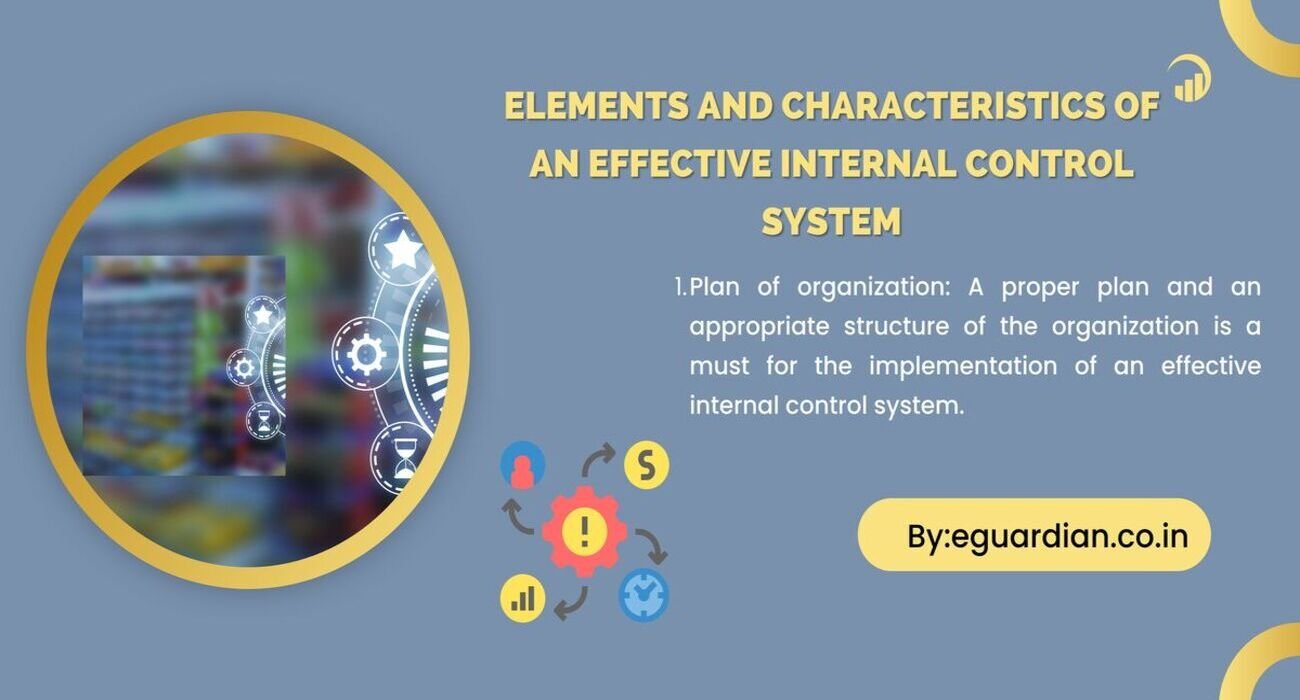Elements and Characteristics of an effective internal control system
Elements and Characteristics of an effective internal control system
Characteristics of an effective internal control system
- Plan of organization: A proper plan and an appropriate structure of the organization is a must for the implementation of an effective internal control system.
- Authorization, Record, and Control Procedures: The basic objective of the authorization, record, and control procedure should be to ensure that:
• Every item of expenditure has been properly authorized and accounted for.
• Every item of receipt has in fact been received and duly accounted for and - Sound practices: An effective internal control system must have an inherent safeguard in procedures and processes. A strong system of internal checks should be in practice. Under an internal check system, it should be ensured that no person alone handles a transaction completely from beginning to end.
- Quality of Personnel: The availability of competent and efficient personnel is a basic prerequisite of an effective internal control system. It is the competent executives who carry out and enforce effectiveness in the internal control system.
Elements of internal control
- Control Environment: Control environment is the foundation of all the other elements of internal controls. It includes and reflects the factors that set the tone of the organization, influencing the control consciousness of its people. SA400: “Risk assessment and internal control” issued by the Institute of Chartered Accountant of India (ICAI) mentioned some of the factors which influence the control environment.
- Risk Assessment: Assessing control risk is the process of evaluating the effectiveness of an entity’s accounting and internal control systems in preventing or detecting material miss-statements in the financial statements.
- Control Activities: Various policies and procedures that help to ensure that those necessary actions are taken to address risks affecting the achievement of the entity’s objectives (PIPS)
P – Performance reviews (review of actual against budgets forecasts)
I – Information processing (checks of accuracy, completeness, authorization)
P – Physical control (Physical security)
S – Segregation of duties - Information and Communication: It includes the accounting system consisting of the methods and records established to record, process, summarize and report transactions and to maintain accountability of the related assets and liabilities.
- Monitoring and Supervision: Monitoring and supervision involve continuous assessment of the quality of internal control performance over time. Management should ensure that the internal control system, as planned, functions properly and modifications needed, if any, are done on a timely basis
Factors for having an effective internal control system for a bank.
There are the following factors for having an effective internal control system for a bank explained below:
1) Cash receipts: To ensure that all cash intended for the organization is received, promptly deposited, properly recorded, reconciled, and kept under adequate security.
2) Cash disbursements: To ensure that cash is disbursed only upon proper authorization of management, for valid business purposes, and that all disbursements are properly recorded.
3) Petty cash: To ensure that petty cash and other working funds are disbursed only for proper purposes, are adequately safeguarded, and properly recorded.
4) Payroll: To ensure that payroll disbursements are made only upon proper authorization to bona fide employees, that payroll disbursement is properly recorded and that related legal requirements (such as payroll tax deposits) are complied with.
5) Grants, gifts, and bequests: To ensure that all grants, gifts, and bequests are received and properly recorded, and that compliance with the terms of any related restrictions is adequately monitored.
6) Fixed assets: To ensure that fixed assets are acquired and disposed of only upon proper authorization, are adequately safeguarded, and properly recorded.
7) Check issuance: The number of signatures on checks, dollar amounts that require board approval or board signature on the check, who authorizes payments and financial commitments, etc.
8) Deposits: How payments made in cash will be handled, etc.
9) Transfers: If and when the general fund can borrow from restricted funds, etc.
10) Approval of plans and commitments before they are implemented: The annual budget and periodic comparisons of financial statements with budgeted amounts, leases, loan agreements, and other major commitments.
11) Personnel policies: Salary levels, vacation, overtime, compensatory time, benefits, grievance procedures, severance pay, evaluation, and other personnel matters.
12) The Accounting Procedures Manual: The policies and procedures for handling financial transactions are best recorded in an Accounting Procedures Manual, describing the administrative tasks and who is responsible for each. The manual does not have to be a formal document, but rather a simple description of how functions such as paying bills, depositing cash, and transferring money between funds are handled.
13) Maintaining Effective Controls: The executive director is commonly responsible for overseeing the day-to-day implementation of these policies and procedures.






